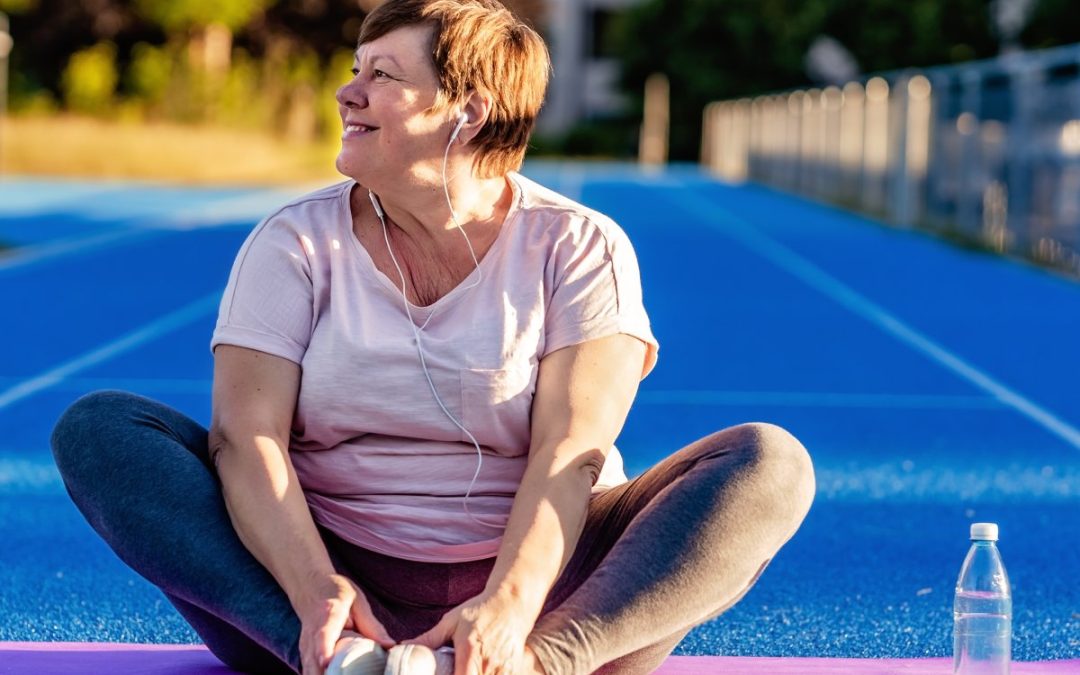Menopause is a natural part of life, but that doesn’t mean the symptoms are easy to manage. From hot flashes and sleep disruptions to anxiety and joint stiffness, these changes can leave you feeling disconnected from your body.
The good news? Movement—done with intention—can help you feel stronger, calmer, and more in control. Let’s explore six safe and gentle workouts for menopause symptom relief that also energize your daily life.
Restorative Yoga
Yoga doesn’t have to mean holding a plank for minutes at a time. Restorative yoga uses bolsters, blankets, and gravity to help you relax deeply. It’s especially beneficial for easing joint stiffness, reducing anxiety, and preparing the body for better sleep.
Practicing just 15 minutes before bed can calm the nervous system, ease tight muscles, and regulate breathing patterns disrupted by hormone shifts.
Nature Walks or Forest Bathing
A simple walk outside offers more than steps on a fitness tracker. Spending time in nature lowers cortisol levels, which is particularly beneficial for women experiencing irritability or mental fog.
Start with 10–15 minutes a day and gradually increase your time. Slowing your pace and tuning into your surroundings can turn a walk into a deeply grounding experience, whether you’re walking along a trail or just circling your neighborhood.
At-Home Climbing Walls
This one might surprise you, but climbing—even on a small at-home wall—can be an empowering and adaptable workout. It helps build upper body strength, improve flexibility, and sharpen focus.
You don’t have to be an expert to get started. Consider upgrading your climbing wall as your skills improve to keep things interesting and rewarding over time as your confidence grows.
Water Aerobics or Swimming
The water’s buoyancy takes pressure off your joints while offering an excellent cardiovascular workout. Swimming or water aerobics classes can regulate body temperature, making it a great option for managing hot flashes.
Water-based workouts can also improve circulation and reduce swelling, common concerns during menopause.
Tai Chi or Qigong
These flowing, meditative practices combine gentle movement with mindful breathing, which is ideal for managing stress and restoring balance. Tai chi or qigong can help you recalibrate your body’s internal rhythm if dizziness or poor sleep has been a problem.
Regular practice strengthens coordination and stability, reducing the risk of falls as bone density changes with age.
Dance Classes or Free Movement
Movement doesn’t have to be structured to be effective. Dance releases endorphins, improves balance, and lifts your spirits, whether in a class or around your living room.
Even 10 minutes of dancing can boost your mood, support heart health, and reconnect you to joy and expression, especially important during periods of emotional fluctuation.
Honor Your Evolution
Every woman’s menopause experience is different. Some days you’ll feel energized; others may need stillness. That’s okay. The key is to move in ways that feel nourishing, not punishing.
These six safe and gentle workouts for menopause symptom relief are more than exercise routines; they’re a reminder that your body is still capable, strong, and worthy of care.

